


Alfred Smith (born 4 August 1850) was an architect who worked in a variety of locations in England, including Nottingham and the Forest of Dean.



Alfred Smith (born 4 August 1850) was an architect who worked in a variety of locations in England, including Nottingham and the Forest of Dean.
He was born on 4 August 1850 in Bungay, Suffolk, the son of Jessey Smith (b. 1826) and Jane Fish (1826-1900)
He married Susanna Anna Leeds, daughter of William Leeds of Reepham on 14 September 1872 in Christ Church, Radford, Nottingham [1] and they had the following children:
He set up office in Bungay, Suffolk, but in 1874 he moved to Nottingham, [2] By 1881 he was living in Mitcheldean, Gloucestershire and was architect to the Forest of Dean Schools Board. By 1891 he was living in Dedham, Essex and was described as a retired architect. In the 1901 he is recorded as a farmer in Westleton in Suffolk, but in 1911 he was living at 3 Lulworth Villas, Maumbury Way, Dorchester and described again as a retired architect.

William Butterfield was a British Gothic Revival architect and associated with the Oxford Movement. He is noted for his use of polychromy.
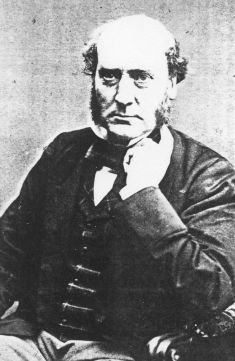
Sir George Gilbert Scott, largely known as Sir Gilbert Scott, was a prolific English Gothic Revival architect, chiefly associated with the design, building and renovation of churches and cathedrals, although he started his career as a leading designer of workhouses. Over 800 buildings were designed or altered by him.
Samuel Sanders Teulon was an English Gothic Revival architect, noted for his use of polychrome brickwork and the complex planning of his buildings.
Charles Francis Hansom was a prominent Roman Catholic Victorian architect who primarily designed in the Gothic Revival style.
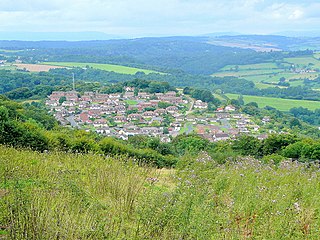
Joy's Green is a village in the Forest of Dean in West Gloucestershire, England. The village is in the civil parish of the neighbouring village of Lydbrook.
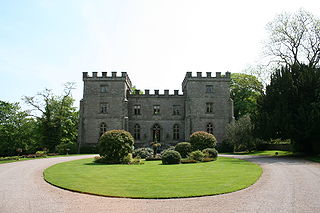
Clearwell Castle in Clearwell, the Forest of Dean, Gloucestershire, is a Gothic Revival house constructed from 1727. Built by Thomas Wyndham to the designs of Roger Morris, it is the earliest Georgian Gothic Revival castle in England predating better-known examples such as Strawberry Hill House by over twenty years. A home of the Wyndham family for some 150 years, the first half of the twentieth century saw a disastrous fire, and subsequent asset-stripping, which brought the castle close to ruination. Slowly restored from 1954, in the 1970s the castle housed a recording studio used by, among other major bands, Black Sabbath, Led Zeppelin, Deep Purple, Bad Company, Queen and Sweet. Now operating as a wedding venue, the castle is a Grade II* listed building.
John West Hugall was an English Gothic Revival architect from Yorkshire.
William Jeffrey Hopkins (1820–1901) was a British architect.
Sidney Gambier-Parry was a British architect.

William Bliss Sanders was an architect based in Nottingham.

Sidney Roberts Stevenson FRIBA was an English architect based in Nottingham.

William Henry Booker FRHistS was an English architect based in Nottingham.

The Church of St Lawrence is a Grade II* listed Church of England church in Sandhurst, Gloucestershire.

The Church of St Mary & Corpus Christi is a grade II* listed Church of England church in Down Hatherley, Gloucestershire. It was rebuilt to a design by Thomas Fulljames in 1859–60.
Albert Estcourt was a builder in Gloucestershire, England, in the 19th century who with his brother, and later on his own, constructed a number of notable buildings in the county and across southern England.
Thomas Fulljames was a land surveyor in Gloucestershire, lord of the manor, and justice of the peace.
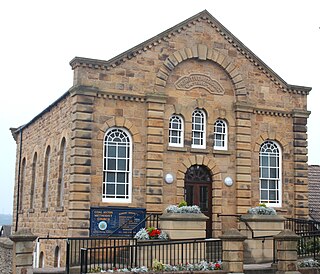
James Kerridge was a British architect based in Wisbech, Cambridgeshire.

Lieut-Colonel Herbert Walker FRIBA, M Inst CE, FSI, was an architect, surveyor and civil engineer based in Nottingham from 1870 to 1923.
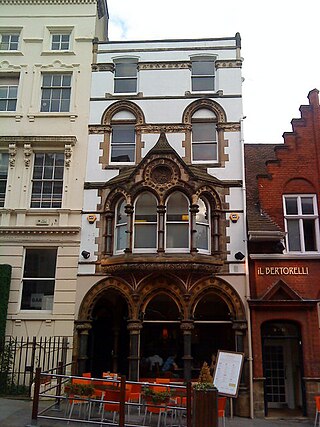
10, Low Pavement is a Grade II listed building in Nottingham.
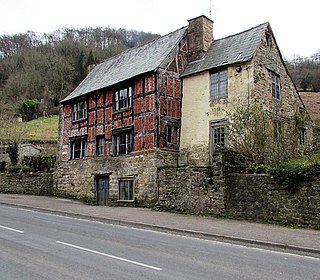
Sarah Siddons' House, also called the Old House, is a cottage in the village of Lydbrook, Gloucestershire, England. A Grade II* listed building, the cottage was reputedly the childhood home of the actor Sarah Siddons.